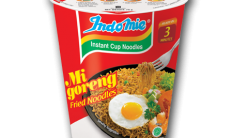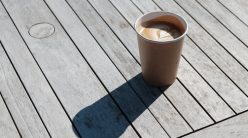Some of America’s inventive minds will compete on new reality show
LOS ANGELES
By Matt Hurwitz
The Associated Press
LOS ANGELES — Who knew we all needed the “Bladder Buddy.” After all, being able to go in public without anybody knowing what you’re doing under that plastic garment bag might come in handy someday.
“Not,” say the four judges on Simon Cowell’s latest competitive concoction, “American Inventor,” premiering Thursday.
The show highlights some of the country’s brightest and most inventive minds — as well as some of the nuttier variety — in a search for the next new “it” gadget. Contestants will vie for a $1 million prize and the chance to have their invention end up in homes across the land.
“It’s everything I love about reality shows, which is the good, the weird and the completely and utterly disillusioned,” Cowell said
The brutally frank judge from Fox’s “American Idol” is one of the new show’s executive producers, but does not appear in the series. He helped develop “Inventor” after being approached by British business executive Peter Jones, one of four judges on the show.
While similar to its musical sister, with the talented to the ludicrous petitioning a panel of judges to continue to the next step, “American Inventor” is actually more akin to “Idol’s” British counterpart, “The X Factor.”
In that series, the judges mentor the contestants before the winner is determined. “Inventor” takes the same route.
As with “Idol,” “Inventor” begins with a set of cattle-call auditions in seven cities, with about 10,000 would-be inventors responding. Several hundred contestants are selected, and over the first four episodes of the show, they present their proposed products to the judges.
Besides Jones, the panel includes ad agency executive Ed Evangelista; Mary Lou Quinlan, whose business focuses on products for women; and inventor Doug Hall, who more typically deals with Fortune 500 companies.
While Hall notes that of the four, he might be the “Simon” of the group, Cowell himself said, “No one’s trying to be (harsh) for the sake of being (harsh).”
Easier said than done when it comes to some of the goofier products paraded past the panel. Besides dental hygienist Hector Ortega’s “Bladder Buddy,” consider the “Video Tattoo,” which embeds a video screen in clothing, or one contestant’s pitch for clothing for cars.
Then we have John Tang, clad in a beetle-inspired space suit, offering the “Space Beetle Utopia,” a would-be amusement park for insects, complete with a “bowling alley.”
On the more practical side, there are inventors such as 18-year-old Columbian student Francisco Bettino, who has created a bicycle with pedals up front for a passenger who rides atop the handlebars. Handyman Mark Martinez, whose simple “Sackmaster” neatly and quickly fills sandbags for residents of flood-prone regions.
The judges narrow the field down to 50 contestants, who, in the show’s fifth episode, get one minute each to pitch their products to them again. The top 24 get another five minutes each to explain how they would use $50,000 to develop their product, with the top dozen of those actually getting that reward.
Then, over the following four episodes, the judges will take three contestants each through the process of developing their inventions into real, viable products. Each judge then picks the best one of their lot as a semifinalist.
“Many of these people aren’t technical, they’re just ordinary people with an idea,” Hall explains. “I get people at Cal Tech and UCLA to help validate what they’re proposing, to give them credibility.”
Finally, each of the four finalists creates a commercial to sell the idea to viewers, who then vote on the winner.
What makes “American Inventor” compelling “is not just the inventions, but the people behind them,” Cowell said.
“Ninety-five percent of the people who turned up are not part-time at this,” he says. “They’re not playing. They’ve literally put their lives, homes, whatever, on the line for this one product.”





